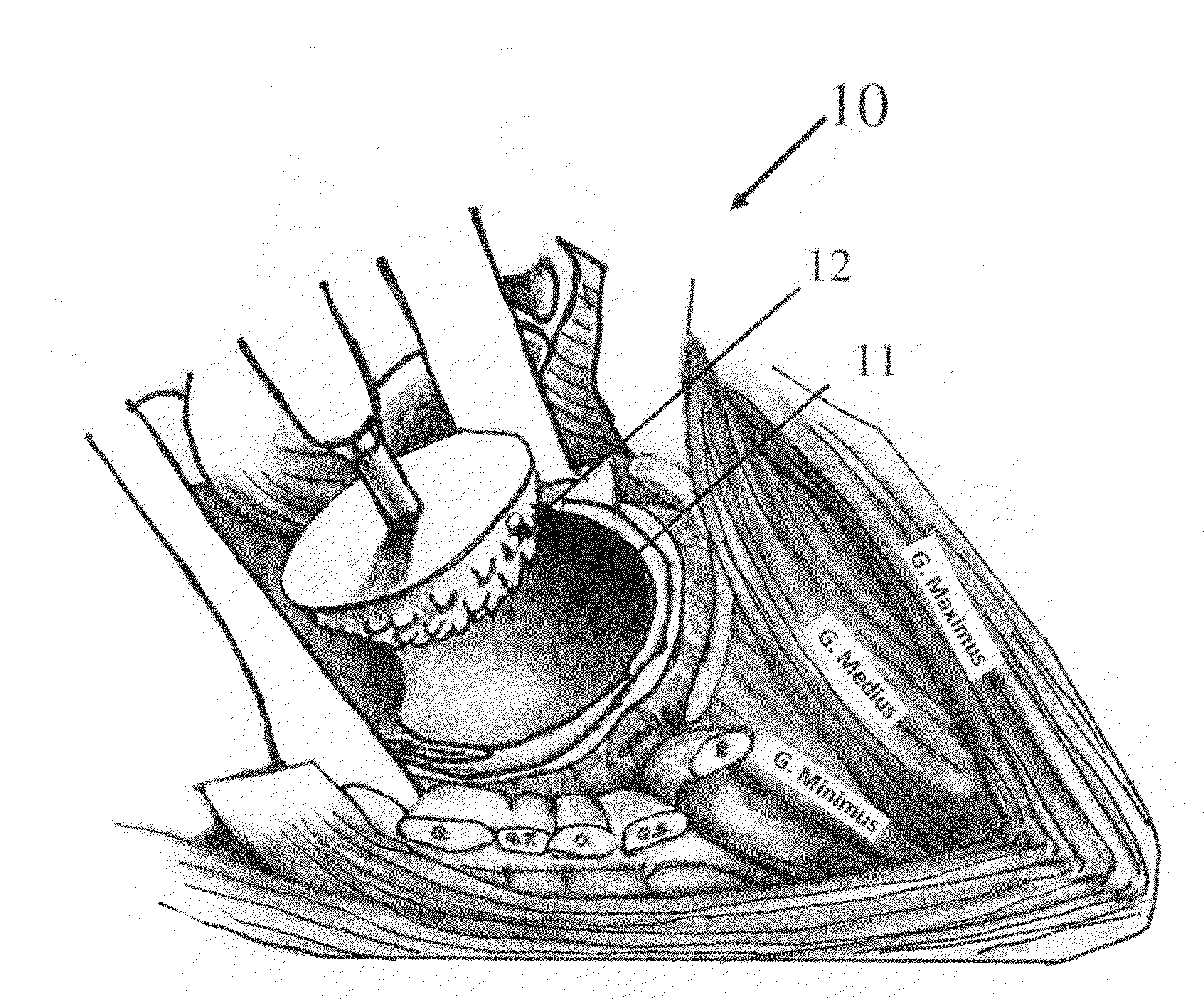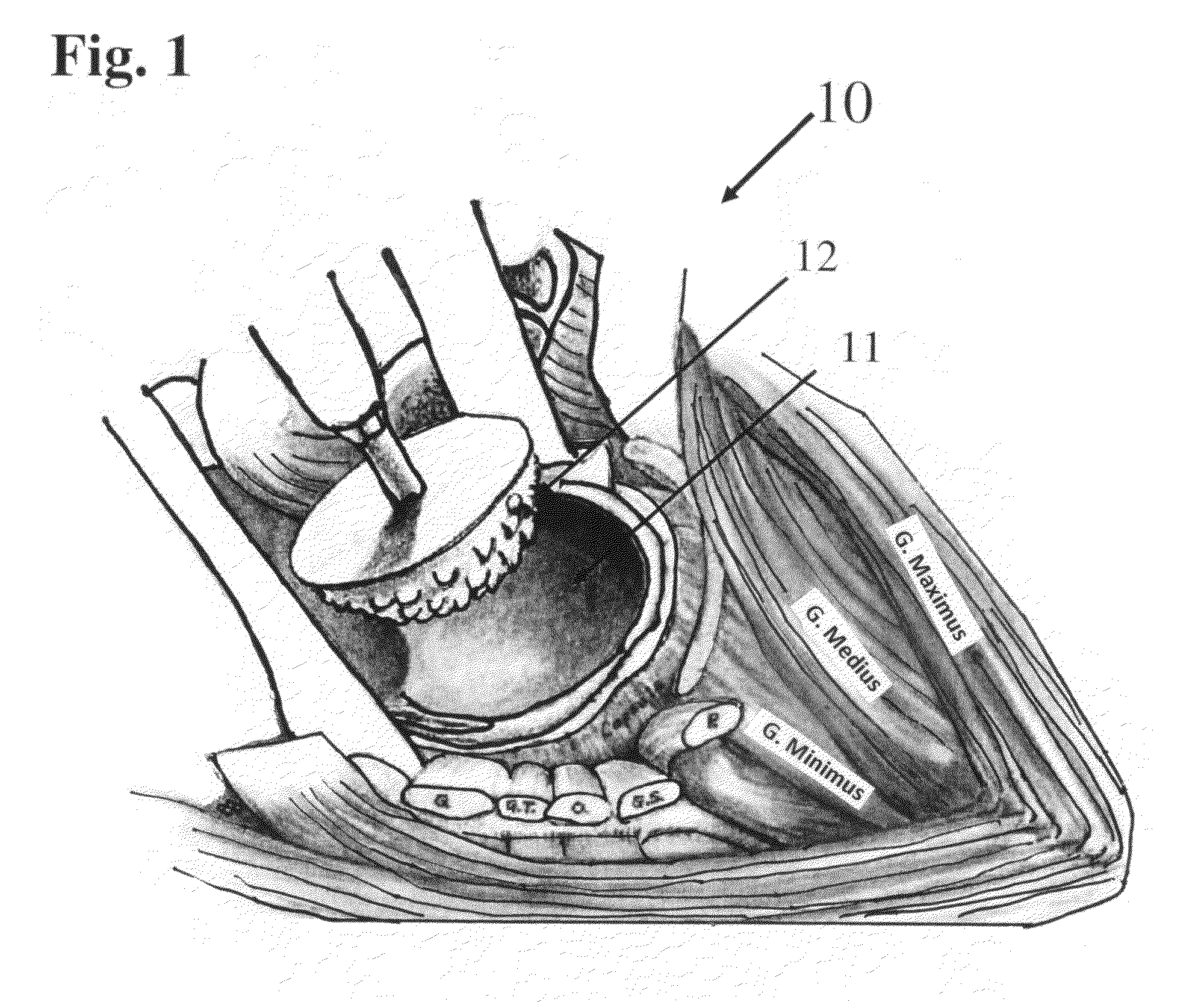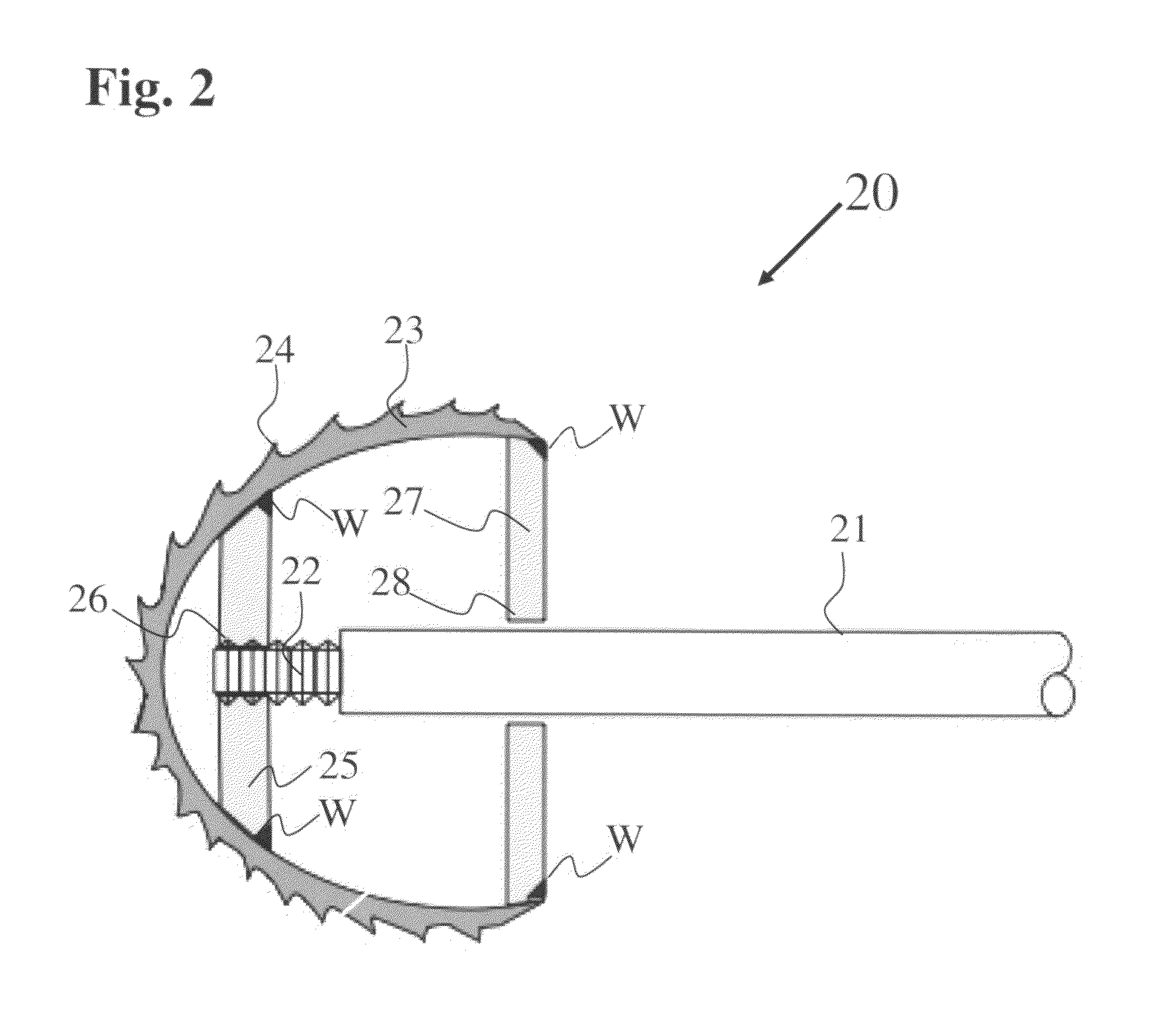Modular spherical hollow reamer assembly for medical applications
a technology of spherical reamer and medical applications, which is applied in the field of modular spherical hollow reamer assembly for medical applications, can solve the problems of poor cutting performance, bone necrosis, and reduced cutting efficiency of conventional spherical reamers, so as to reduce the number of teeth, reduce the size of a typical chip generated upon cutting, and reduce the cutting pressure on each tooth
- Summary
- Abstract
- Description
- Claims
- Application Information
AI Technical Summary
Benefits of technology
Problems solved by technology
Method used
Image
Examples
Embodiment Construction
[0046]In orthopedic surgery, total hip replacements require reaming the internal geometry of the acetabulum in order to establish a precise fit for the implant. This preparation can be intended for either cementing an acetabular cup (preparation would be oversized to the implant) or press fitting an acetabular cup (preparation undersized to the implant). In either case, a spherically shaped cutter is used to machine the internal geometry of the acetabulum. These spherical cutting tools are required to cut both cortical bone (hard bone) and cancellous bone (spongy bone) during normal surgery. The spherical cutter is generally assembled to a drive shaft which is coupled to a power drill and this assembly is used to machine the acetabulum for the implant. These cutters are intended for multiple surgeries and are used many times for many patients. The cutting action of these reamers is afforded by a plurality of cutting teeth. Because these teeth encounter hard bone and they are used mu...
PUM
 Login to View More
Login to View More Abstract
Description
Claims
Application Information
 Login to View More
Login to View More - R&D
- Intellectual Property
- Life Sciences
- Materials
- Tech Scout
- Unparalleled Data Quality
- Higher Quality Content
- 60% Fewer Hallucinations
Browse by: Latest US Patents, China's latest patents, Technical Efficacy Thesaurus, Application Domain, Technology Topic, Popular Technical Reports.
© 2025 PatSnap. All rights reserved.Legal|Privacy policy|Modern Slavery Act Transparency Statement|Sitemap|About US| Contact US: help@patsnap.com



